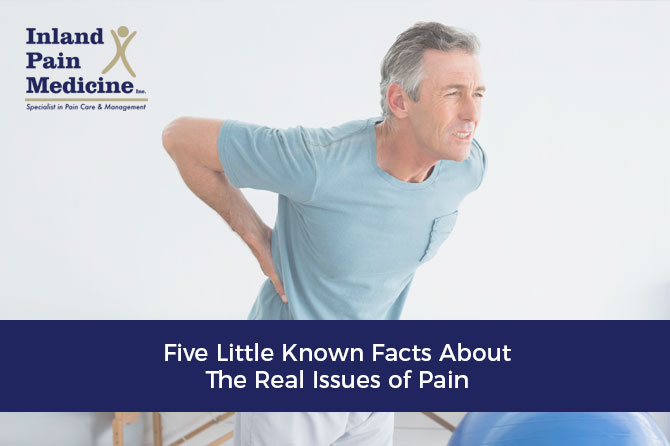
Did you know that there are around 75 million people in the US who suffer from chronic pain? One-third of them suffer from chronic back pain and another third suffer from migraines.
One of the most difficult aspects of chronic pain is that it is equal parts physical and emotional. Meaning, a patient’s physical back pain, for example, can cause feelings of frustration and sadness. Those feelings can lead to stress. And stress only exacerbates the pain. Starting the cycle all over again.
What’s worse, even with all of today’s advanced technology, it can still be difficult to measure, diagnose, and effectively treat chronic pain. Increasing the risks and side effects of treatments.
Science Still Can Not Adequately Explain The Root Cause Of Pain:
When a patient experiences a broken limb or a has an episode related to heart disease, it’s easy for physicians to prescribe treatment. Tear a ligament and a doctor can fix it with arthroscopic surgery. experiencing heart failure and there is a specific course of drugs and therapies that are known to be effective.
Unfortunately, medical professionals do not have an accurate understanding of the mechanism of pain. This makes diagnosis and treatment difficult to administer. Even anatomical issues associated with chronic pain are still difficult to accurately diagnose.
This can even lead to increased pain until a suitable course of treatment is found to be effective.
Chronic Pain Leaves Patients Feeling All Alone:
For friends and family who have never suffered chronic pain, it can be difficult for patients to explain. Until you have walked a mile in another person’s shoes, it is almost impossible to understand.
This sense of loneliness can lead to further pain. Many times, it can also lead to diagnosed depression.
This is why a strong community-based support network is so important for patients suffering from chronic pain. Having the support of others who have similar conditions can create an atmosphere of understanding. This reduces the short-term severity of depression and can, in some cases, reduce perceived levels of pain.
Low Back Pain is Best Managed With Exercise:
A common myth regarding chronic low back pain is that rest is the best course of treatment. This is simply not the case.
The most common causes of low back pain are excess weight and lack of exercise. Continued rest will not make these symptoms go away.
Increased activity along with a healthy diet will allow patients to lose weight. This course of treatment, along with range of motion exercises to increase flexibility, is the activity the joints and muscles of the low back need in order to regain mobility.
Osteoarthritis is best managed With Exercise:
Another common myth is that further exercise will damage joints affected by osteoarthritis. Again, in most cases, inactivityis the cause of osteoarthritis pain.
Similar to low back pain, osteoarthritis pain is best treated with exercise. Studies have shown that an increase in exercise in the affected joints leads to reduced pain for prolonged periods of time.
Plus, overall health and increased quality of life are other benefits of increased levels of exercise.
Smoking Increases Patient’s Risk For Chronic Pain:
While the mechanism is unclear, what is clear is that smoking puts patients at a much higher risk for chronic pain. People who smoke tend to lead sedentary lives. Inactivity is one of the greatest risk factors for chronic low back pain and osteoarthritis.
Smoking impairs the immune system and increases the risk of infection after surgery. Smokers typically need an increased dosage of medications to manage chronic pain. This is because nicotine alters the pain receptors in the body. Leaving some treatments ineffective whereas non-smokers see life-changing benefits.
Inland Pain Medicine has the experience to treat a wide range of people who suffer from many chronic pain conditions. Our staff of medically trained pain management experts is here to help. We are licensed to administer a wide variety of proven procedures in the safety of our office. Give us a call at 909 887 2991 to set an appointment. Let us relieve the pressure and relieve your pain. So you may get back to your normal pain-free life.
Leave a reply








Leave a reply